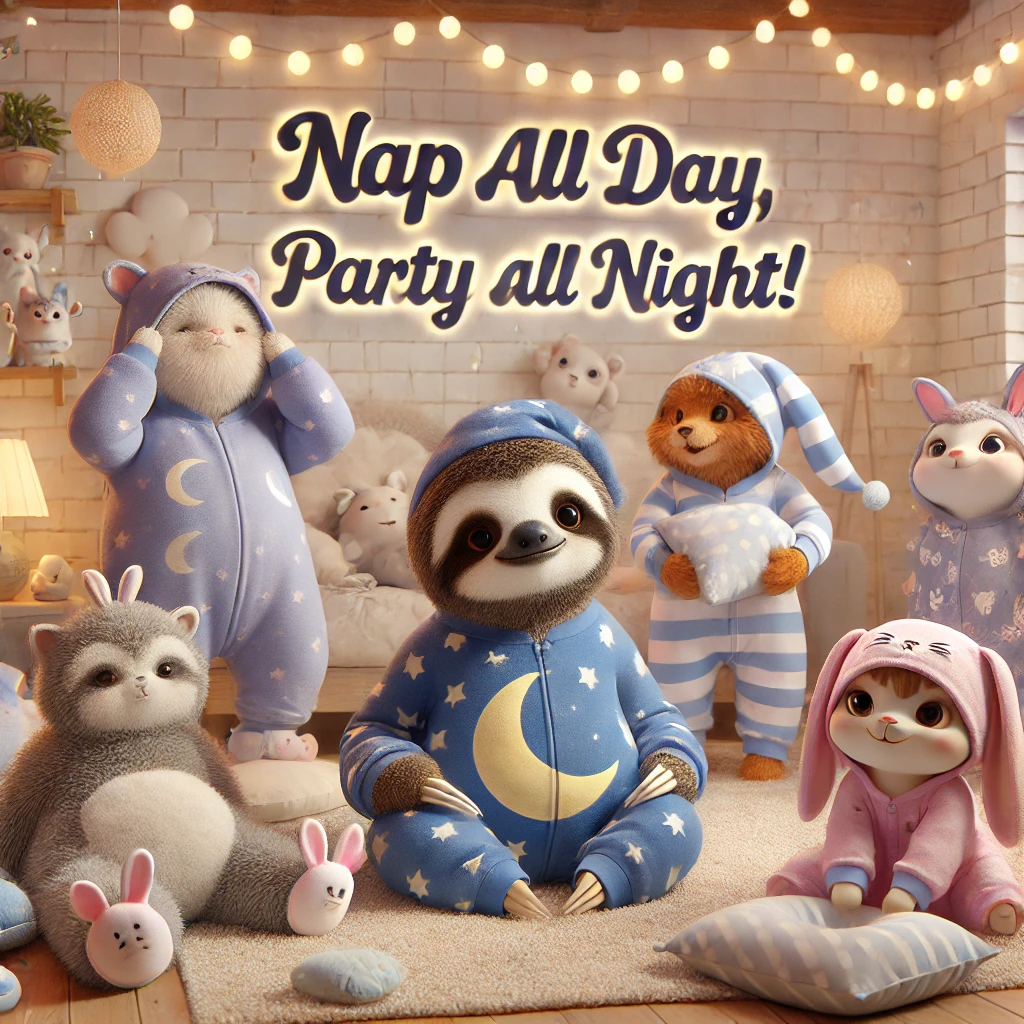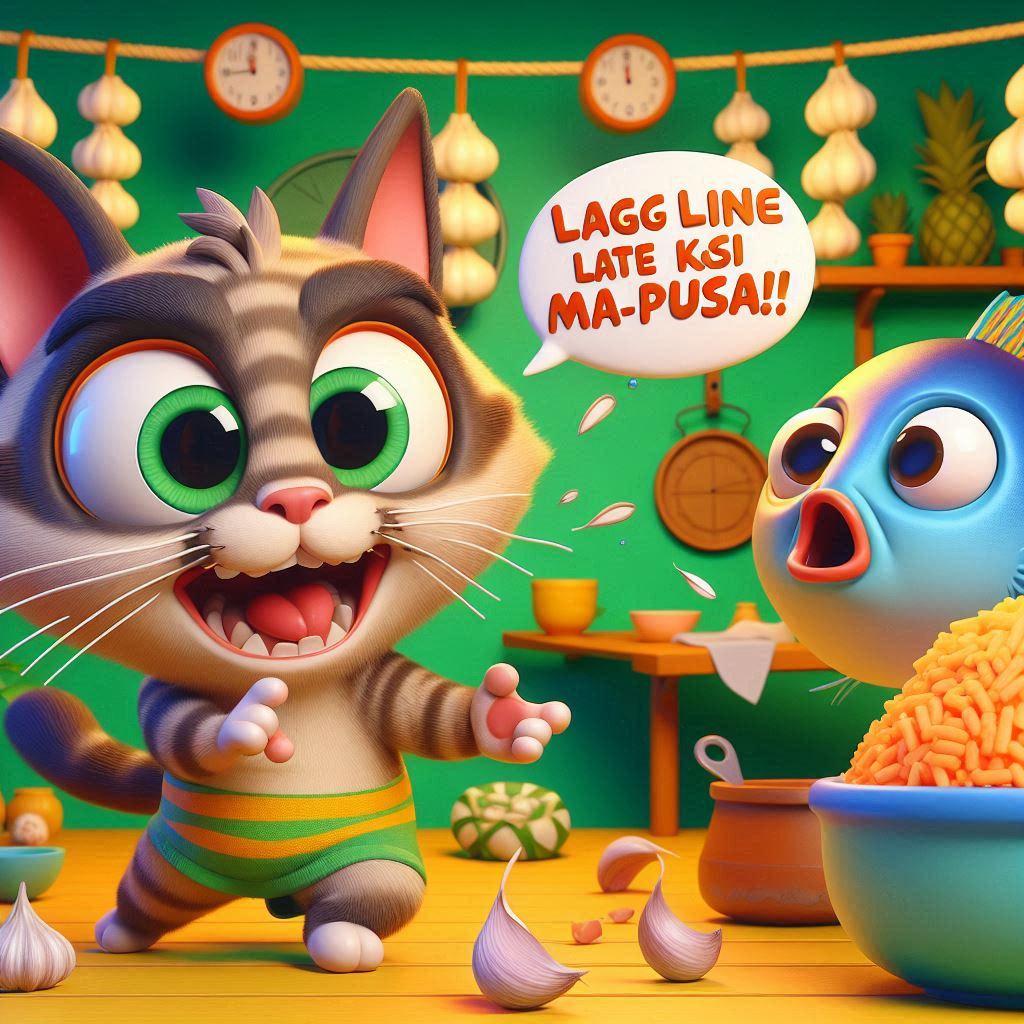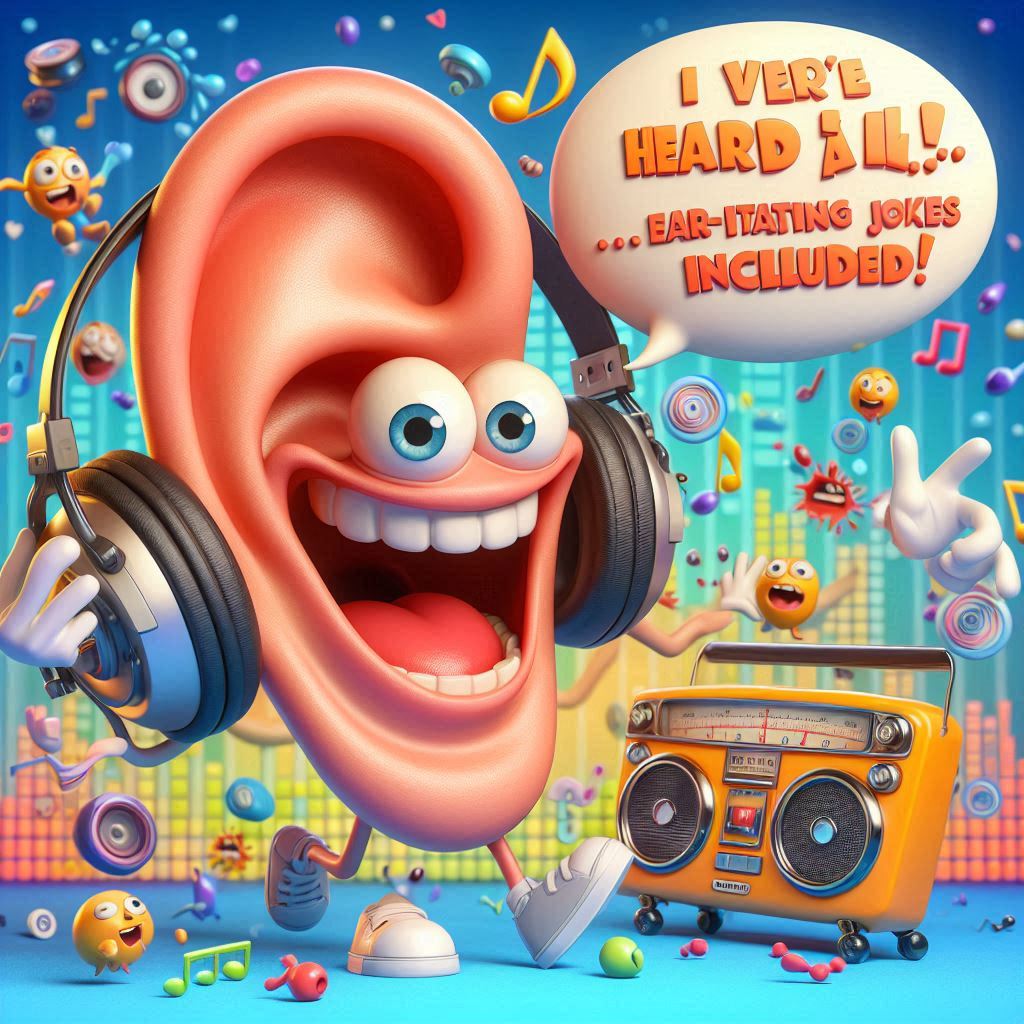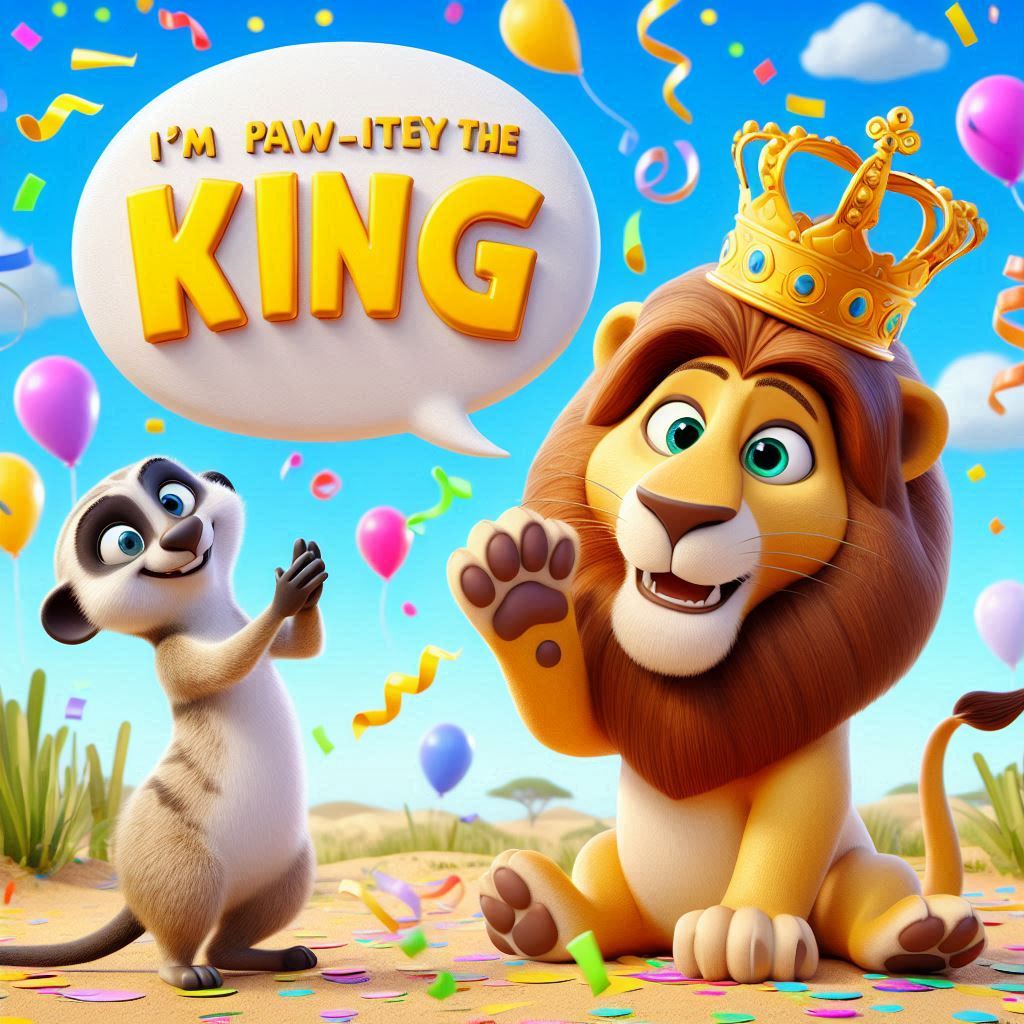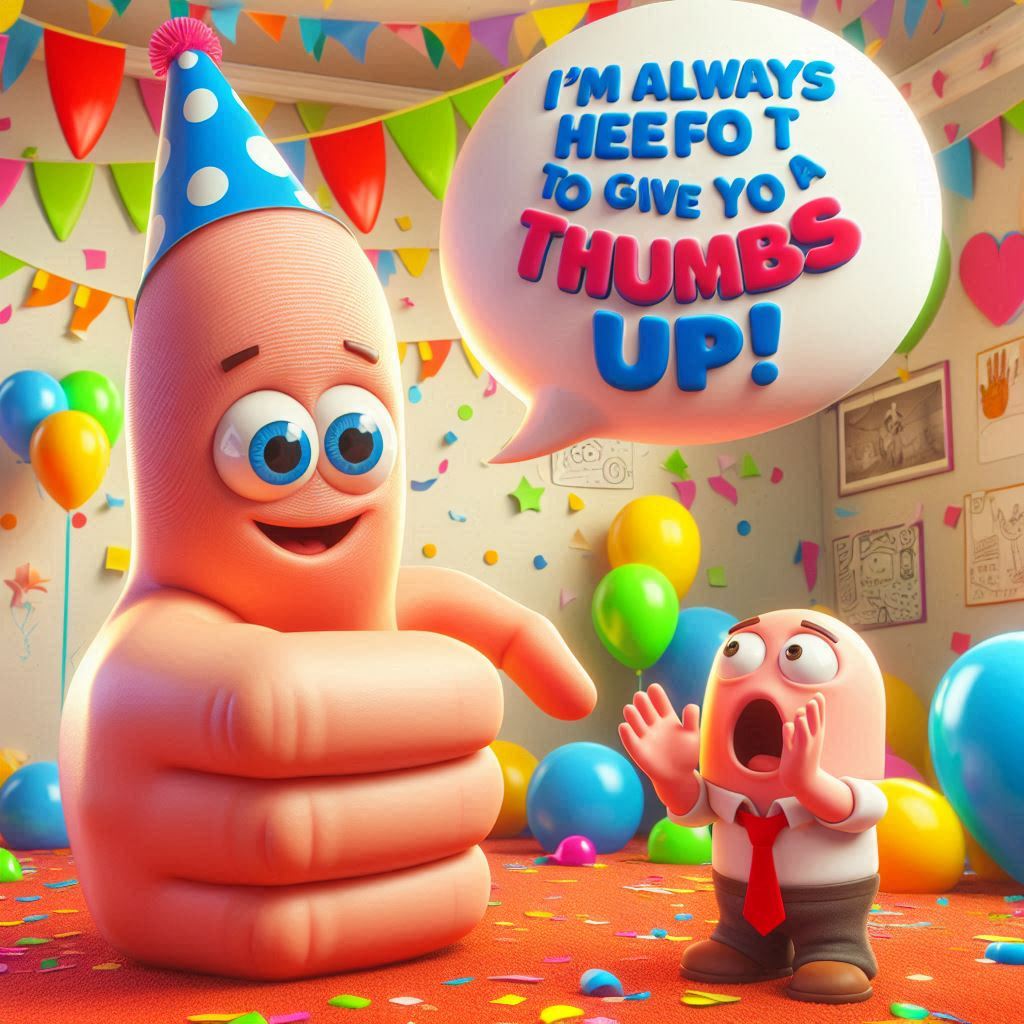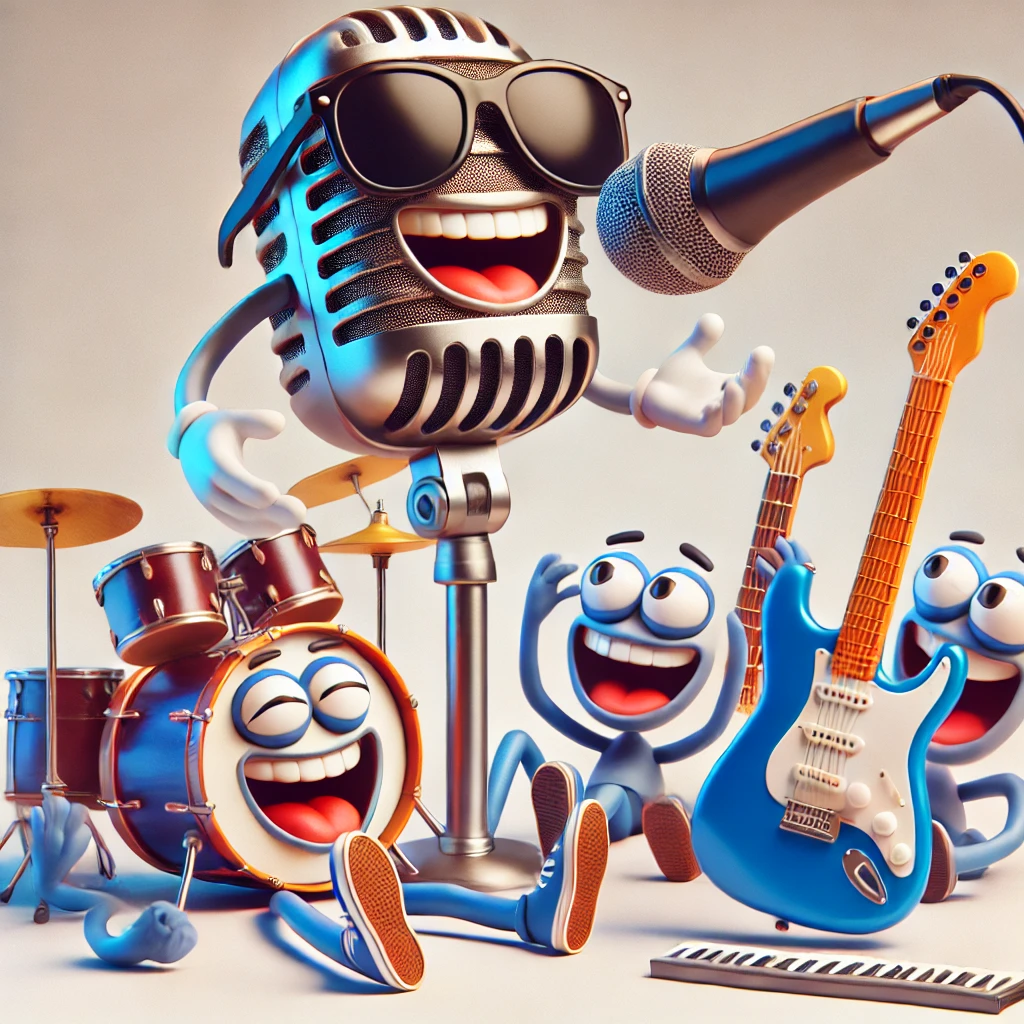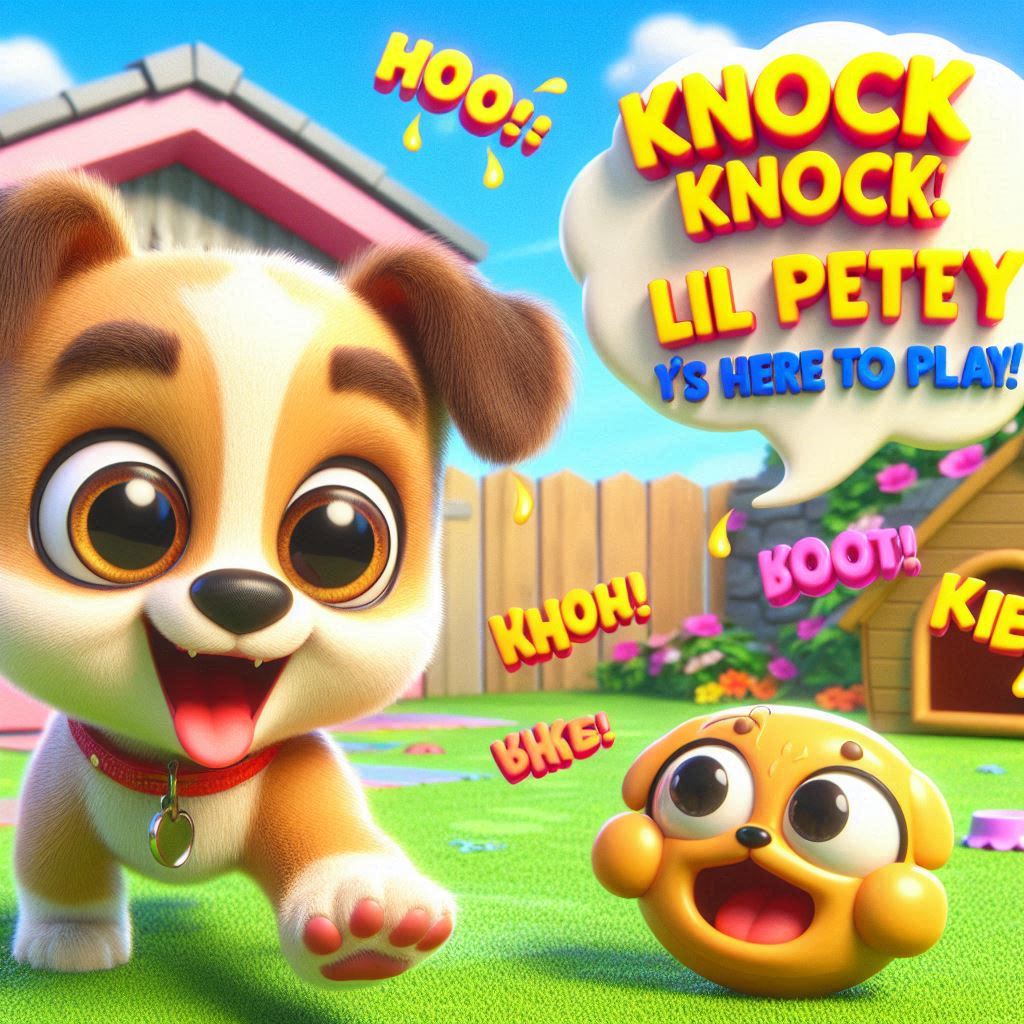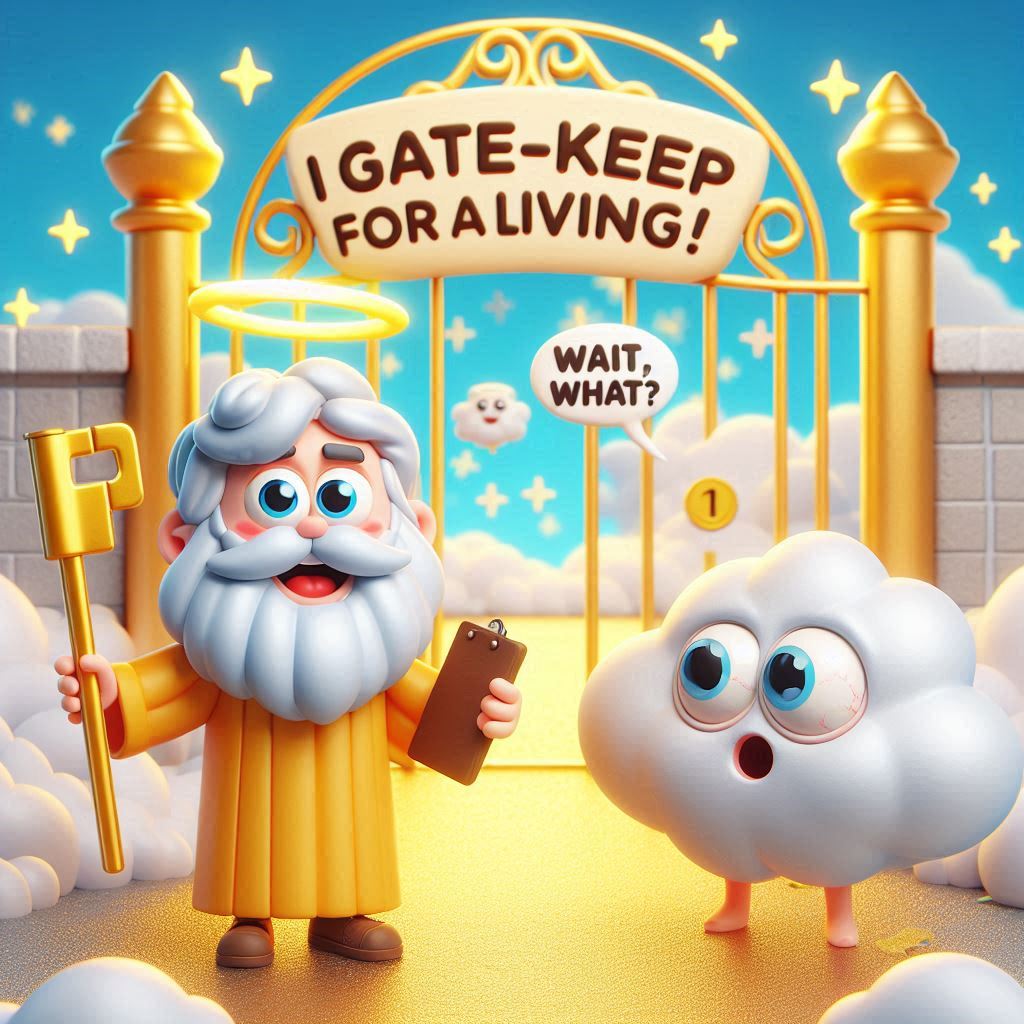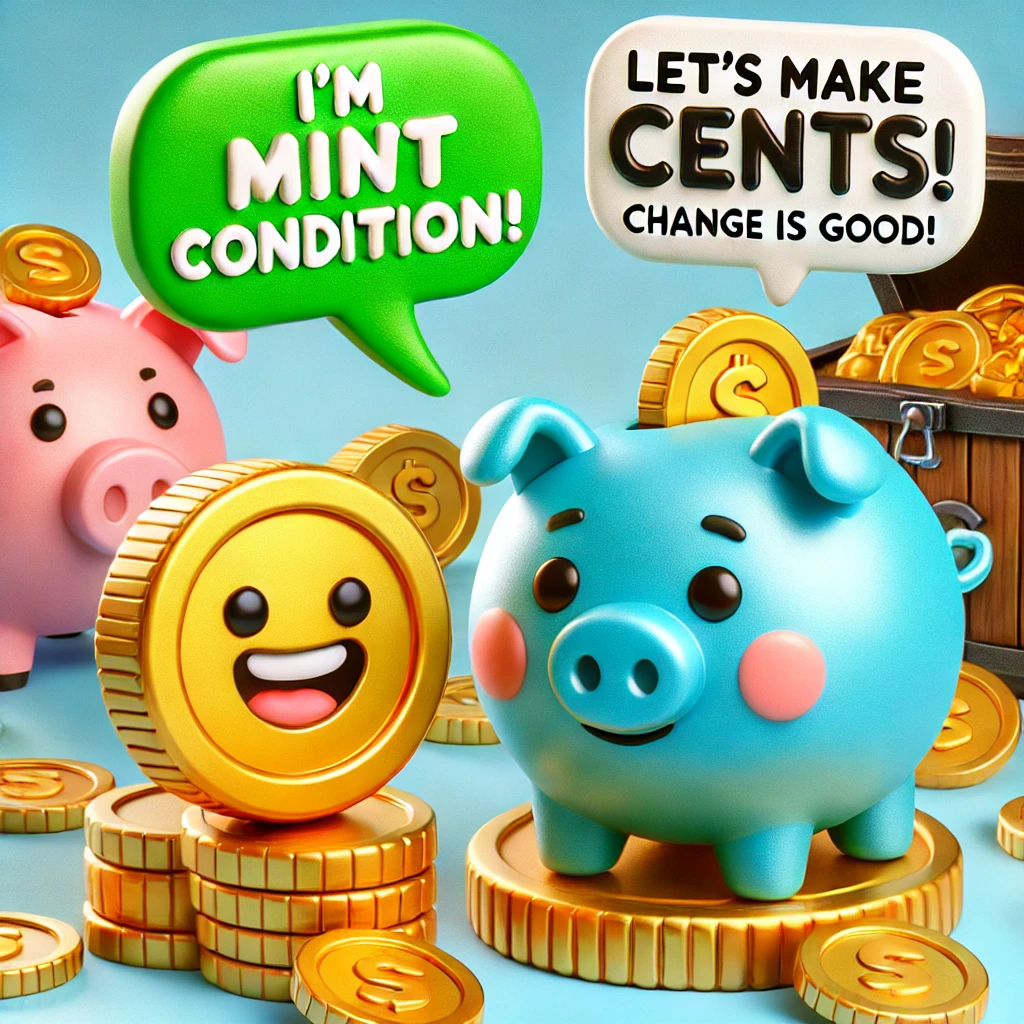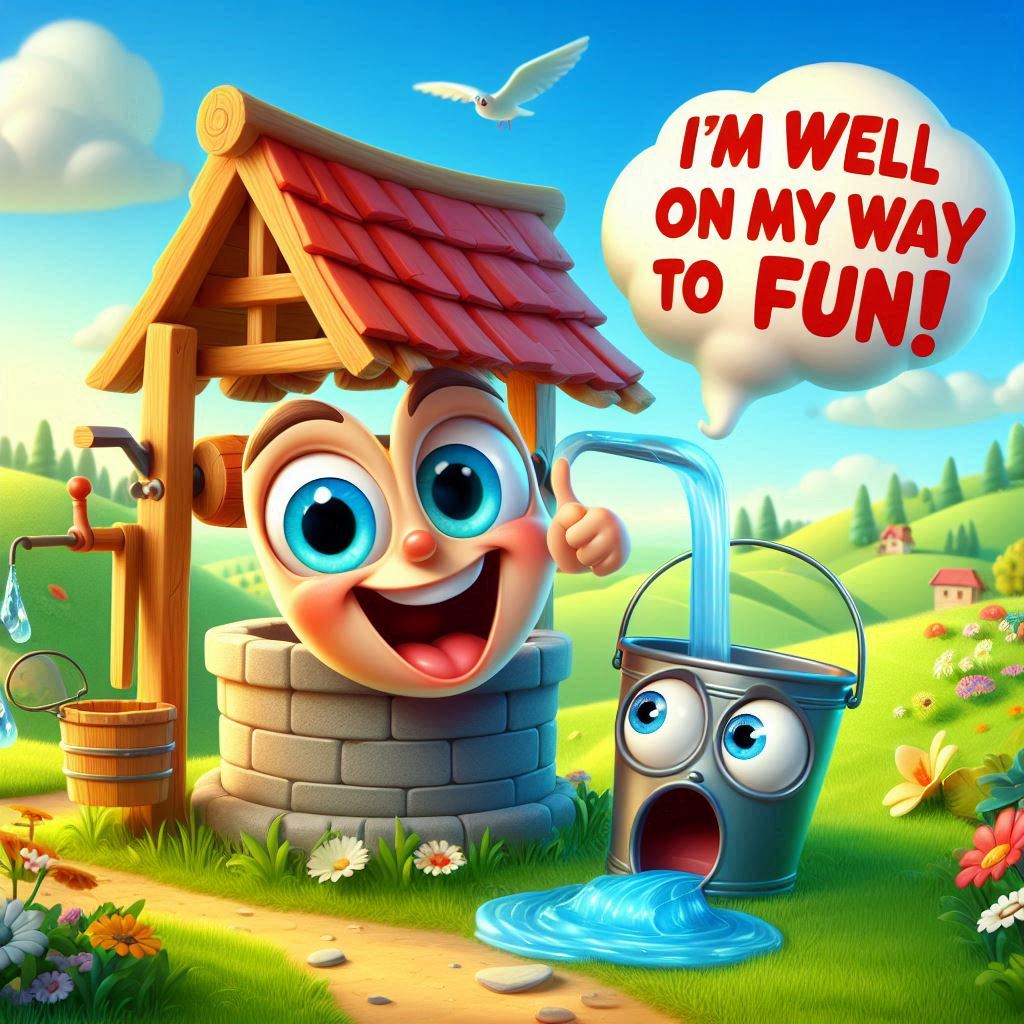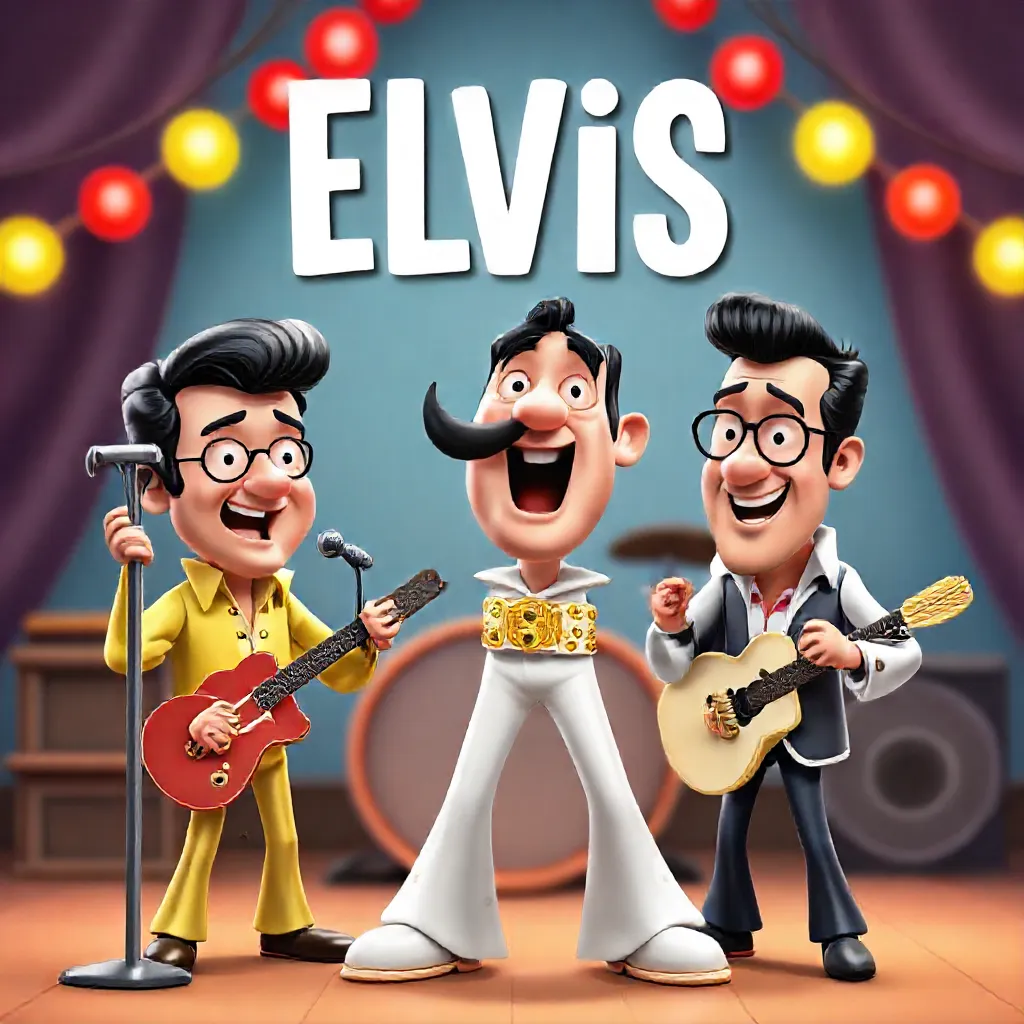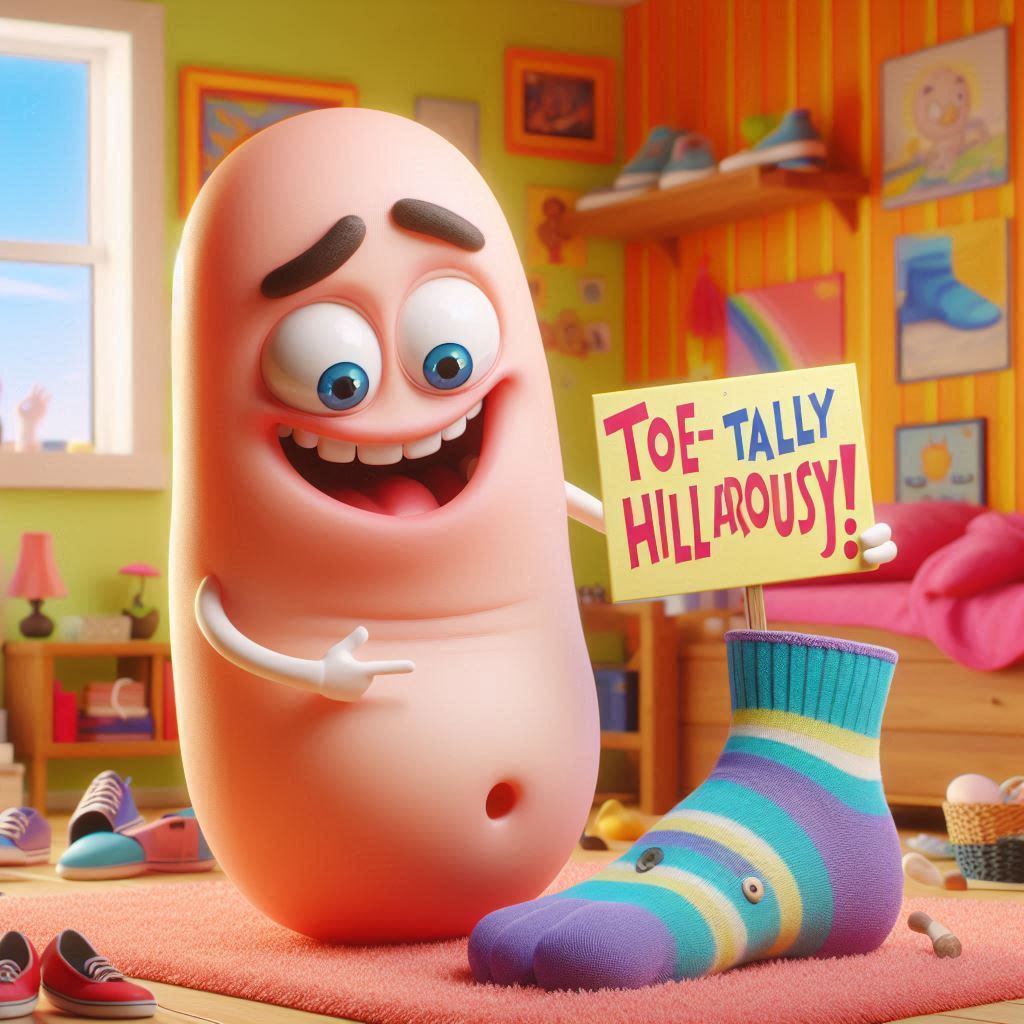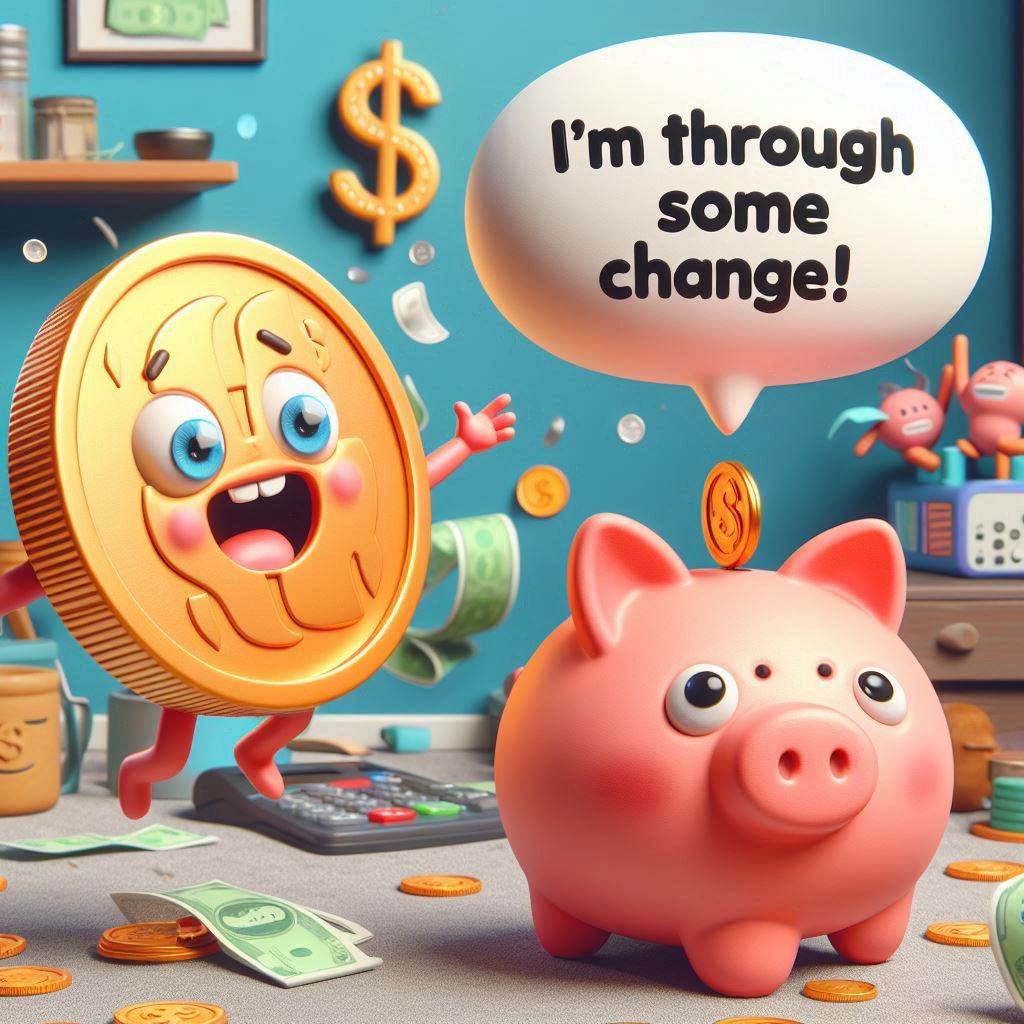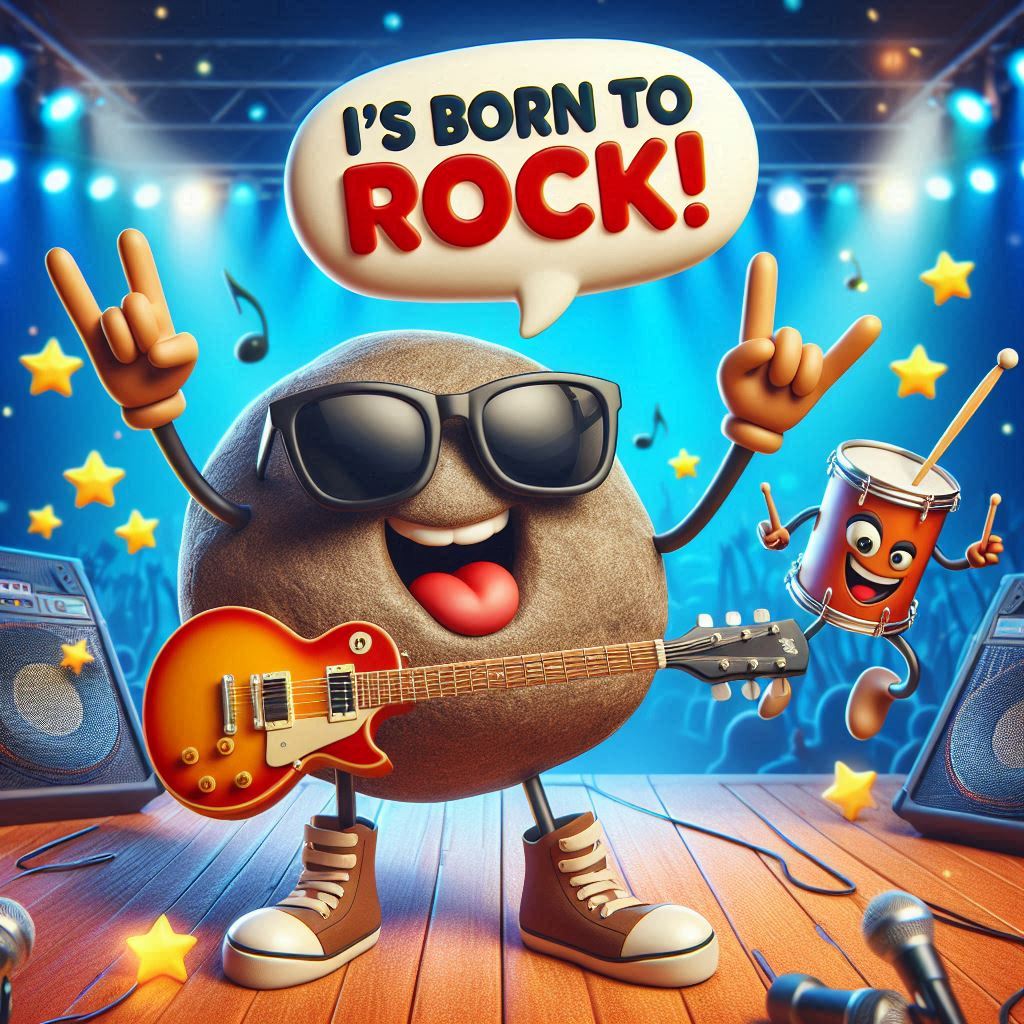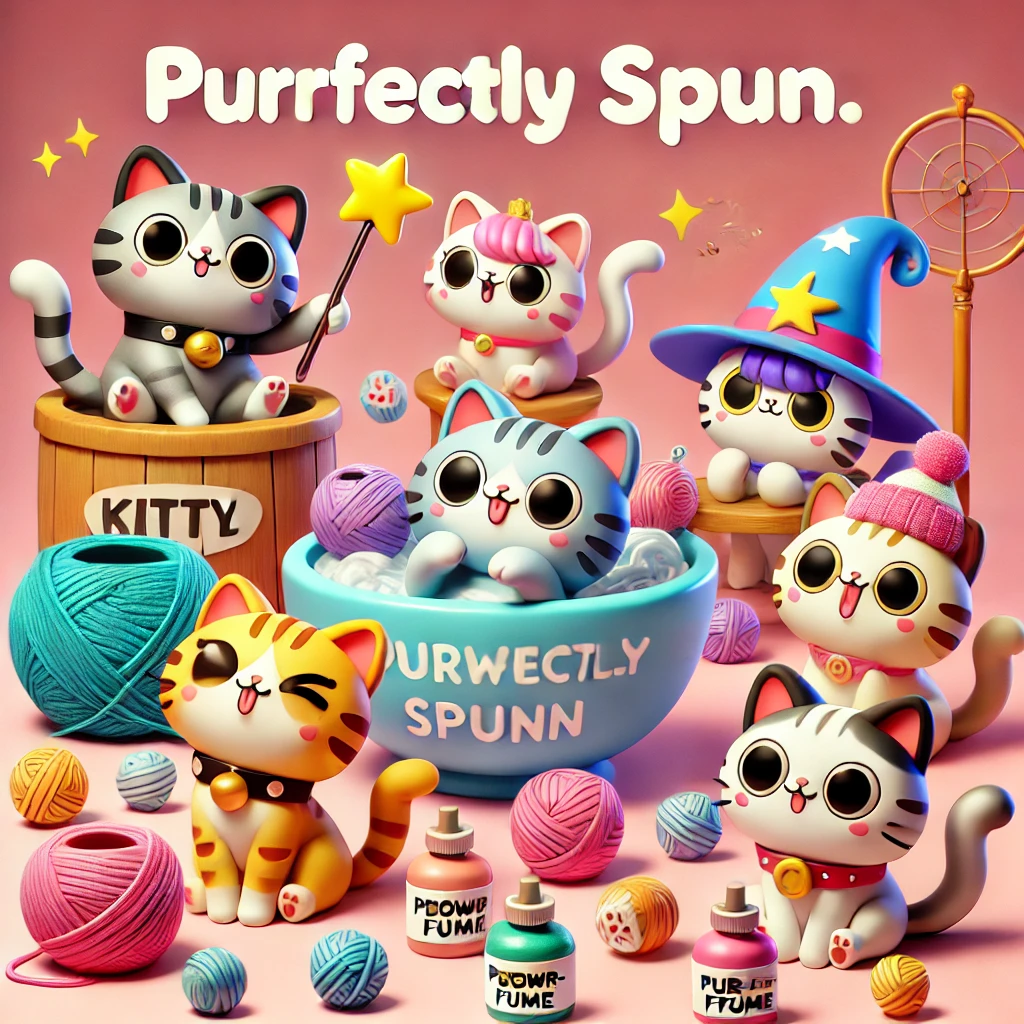Explaining jokes is like popping a balloon. The laugh kind of floats away. Still, sometimes it’s moo-ving stuff.
Some folks just don’t get the punchline. That’s okay—humor isn’t one-size-fits-all. A little nudge can help the giggles.
Jokes work by surprise or silly twists! 🤯 Our brains love when things go “off-script.” That’s the secret to laughter.
But when you explain, it slows the spark. The magic tiptoes out the back door. Still, it can teach timing and wordplay.
So next time someone says “I don’t get it,” smile. You’re about to become the joke whisperer. Just keep it pun-light! 😄
I. Best Jokes Explained
Discover the humor behind some of the funniest jokes, understanding what makes them tick and why they make us laugh.
Dive into the clever world of joke explanations for all ages.
- Why did the scarecrow win an award? Because he was outstanding in his field!
- What do you call fake spaghetti? An impasta!
- Why don’t skeletons fight each other? They don’t have the guts.
- What do you get when you cross a snowman and a vampire? Frostbite!
- Why did the bicycle fall over? Because it was two-tired!
- What do you call a bear with no teeth? A gummy bear!
- Why did the tomato turn red? Because it saw the salad dressing!
- What do you call cheese that isn’t yours? Nacho cheese!
- Why did the math book look sad? Because it had too many problems.
- What did one wall say to the other wall? I’ll meet you at the corner!
- Why did the cookie go to the hospital? Because he felt crummy!
- What do you call a sleeping bull? A bulldozer!
- Why did the computer go to the doctor? Because it had a virus!
- What do you call a fish that wears a crown? A king fish!
- Why was the belt arrested? Because it held up a pair of pants!
- What do you call a lazy kangaroo? A pouch potato!
- Why did the banana go to the doctor? Because it wasn’t peeling well!
- What do you call an alligator in a vest? An investigator!
- Why did the chicken join a band? Because it had the drumsticks!
- What’s orange and sounds like a parrot? A carrot!
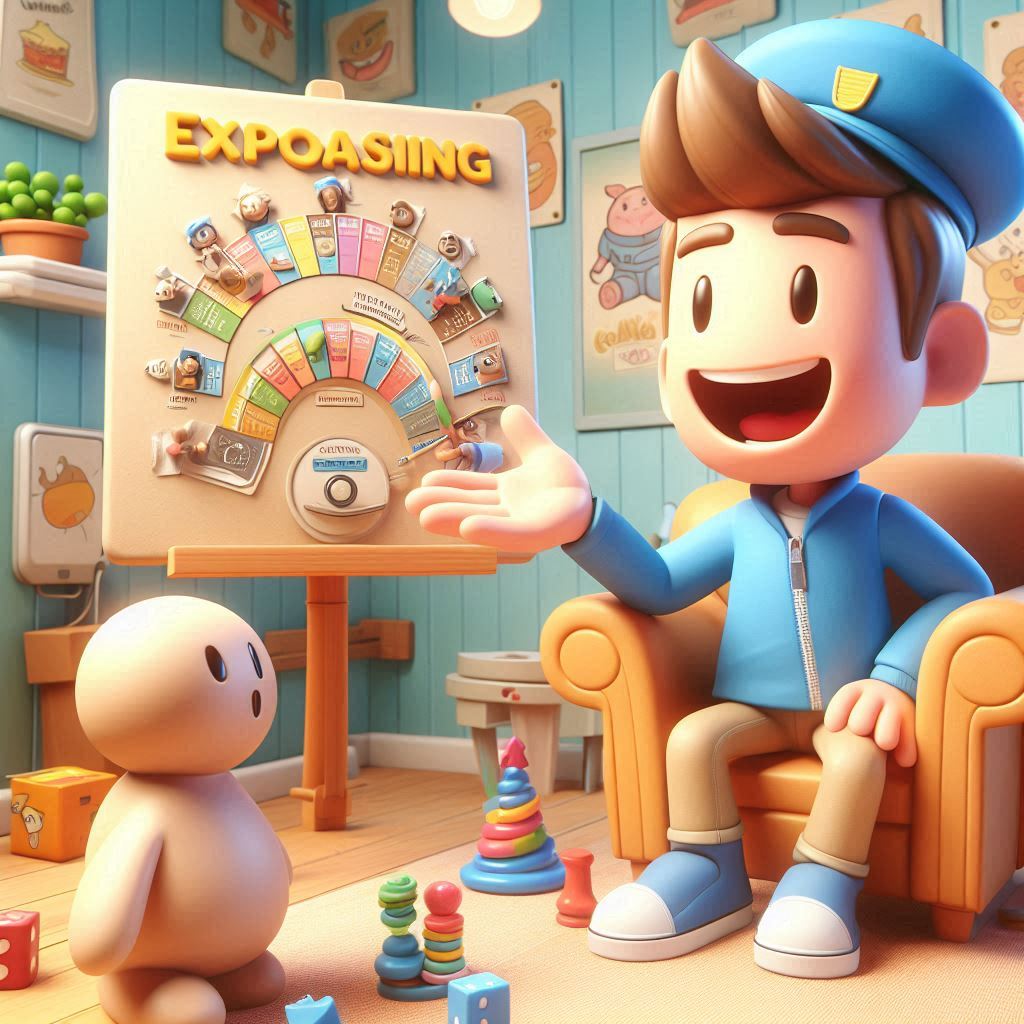
II. One Liner Joke Analysis
Discover the humor behind some of the funniest jokes, understanding what makes them tick and why they make us laugh.
Dive into the clever world of joke explanations for all ages.
- Why did the scarecrow win an award? Because he was outstanding in his field!
- What do you call fake spaghetti? An impasta!
- Why don’t skeletons fight each other? They don’t have the guts.
- What do you get when you cross a snowman and a vampire? Frostbite!
- Why did the bicycle fall over? Because it was two-tired!
- What do you call a bear with no teeth? A gummy bear!
- Why did the tomato turn red? Because it saw the salad dressing!
- What do you call cheese that isn’t yours? Nacho cheese!
- Why did the math book look sad? Because it had too many problems.
- What did one wall say to the other wall? I’ll meet you at the corner!
- Why did the cookie go to the hospital? Because he felt crummy!
- What do you call a sleeping bull? A bulldozer!
- Why did the computer go to the doctor? Because it had a virus!
- What do you call a fish that wears a crown? A king fish!
- Why was the belt arrested? Because it held up a pair of pants!
- What do you call a lazy kangaroo? A pouch potato!
- Why did the banana go to the doctor? Because it wasn’t peeling well!
- What do you call an alligator in a vest? An investigator!
- Why did the chicken join a band? Because it had the drumsticks!
- What’s orange and sounds like a parrot? A carrot!
III. Joke Q&A Sessions
Enjoy engaging question-and-answer sessions that explore the humor behind popular jokes. These interactions reveal why jokes are funny and how they work.
- Q: Why did the scarecrow win an award? A: Because he was outstanding in his field!
- Q: What do you call fake spaghetti? A: An impasta!
- Q: Why don’t skeletons fight each other? A: They don’t have the guts.
- Q: What do you get when you cross a snowman and a vampire? A: Frostbite!
- Q: Why did the bicycle fall over? A: Because it was two-tired!
- Q: What do you call a bear with no teeth? A: A gummy bear!
- Q: Why did the tomato turn red? A: Because it saw the salad dressing!
- Q: What do you call cheese that isn’t yours? A: Nacho cheese!
- Q: Why did the math book look sad? A: Because it had too many problems.
- Q: What did one wall say to the other wall? A: I’ll meet you at the corner!
- Q: Why did the cookie go to the hospital? A: Because he felt crummy!
- Q: What do you call a sleeping bull? A: A bulldozer!
- Q: Why did the computer go to the doctor? A: Because it had a virus!
- Q: What do you call a fish that wears a crown? A: A king fish!
- Q: Why was the belt arrested? A: Because it held up a pair of pants!
- Q: What do you call a lazy kangaroo? A: A pouch potato!
- Q: Why did the banana go to the doctor? A: Because it wasn’t peeling well!
- Q: What do you call an alligator in a vest? A: An investigator!
- Q: Why did the chicken join a band? A: Because it had the drumsticks!
- Q: What’s orange and sounds like a parrot? A: A carrot!
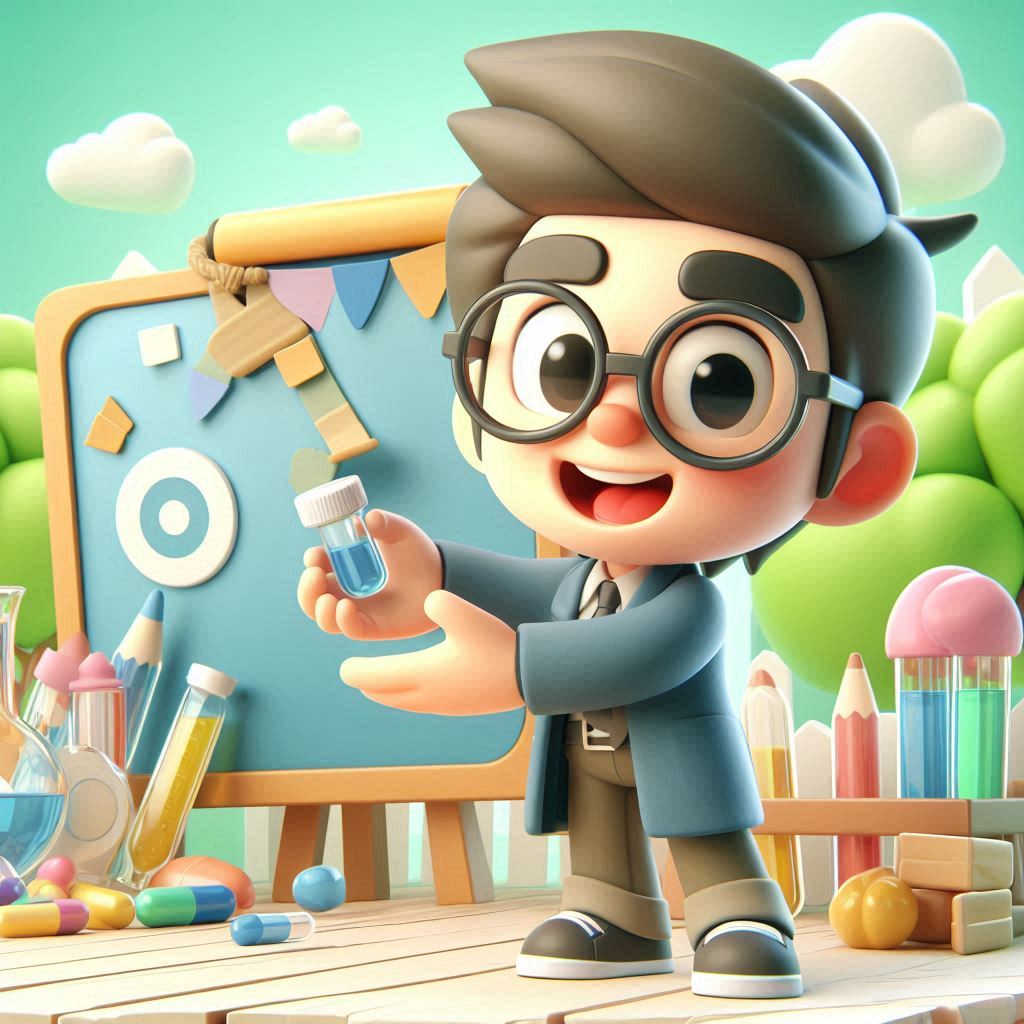
IV. Understanding Humor in Jokes
A playful look into what makes jokes funny, revealing the clever twists and surprises that tickle our brains and bring smiles to all ages.
- Why did the scarecrow win an award? Because he was outstanding in his field!
- What do you call fake spaghetti? An impasta!
- Why don’t skeletons fight each other? They don’t have the guts.
- What do you get when you cross a snowman and a vampire? Frostbite!
- Why did the bicycle fall over? Because it was two-tired!
- What do you call a bear with no teeth? A gummy bear!
- Why did the tomato turn red? Because it saw the salad dressing!
- What do you call cheese that isn’t yours? Nacho cheese!
- Why did the math book look sad? Because it had too many problems.
- What did one wall say to the other wall? I’ll meet you at the corner!
- Why did the cookie go to the hospital? Because he felt crummy!
- What do you call a sleeping bull? A bulldozer!
- Why did the computer go to the doctor? Because it had a virus!
- What do you call a fish that wears a crown? A king fish!
- Why was the belt arrested? Because it held up a pair of pants!
- What do you call a lazy kangaroo? A pouch potato!
- Why did the banana go to the doctor? Because it wasn’t peeling well!
- What do you call an alligator in a vest? An investigator!
- Why did the chicken join a band? Because it had the drumsticks!
- What’s orange and sounds like a parrot? A carrot!
V. Classic Jokes and Their Meanings
Enjoy timeless humor with classic jokes that have delighted generations, along with their fun explanations to understand what makes them so memorable and funny.
- Why did the scarecrow win an award? Because he was outstanding in his field!
- What do you call fake spaghetti? An impasta!
- Why don’t skeletons fight each other? They don’t have the guts.
- What do you get when you cross a snowman and a vampire? Frostbite!
- Why did the bicycle fall over? Because it was two-tired!
- What do you call a bear with no teeth? A gummy bear!
- Why did the tomato turn red? Because it saw the salad dressing!
- What do you call cheese that isn’t yours? Nacho cheese!
- Why did the math book look sad? Because it had too many problems.
- What did one wall say to the other wall? I’ll meet you at the corner!
- Why did the cookie go to the hospital? Because he felt crummy!
- What do you call a sleeping bull? A bulldozer!
- Why did the computer go to the doctor? Because it had a virus!
- What do you call a fish that wears a crown? A king fish!
- Why was the belt arrested? Because it held up a pair of pants!
- What do you call a lazy kangaroo? A pouch potato!
- Why did the banana go to the doctor? Because it wasn’t peeling well!
- What do you call an alligator in a vest? An investigator!
- Why did the chicken join a band? Because it had the drumsticks!
- What’s orange and sounds like a parrot? A carrot!
VI. The Science of Joke Explanation
Explore how humor works scientifically, revealing the psychological and neurological processes behind why jokes make us laugh and their cognitive effects.
- Humor activates specific brain regions associated with pleasure and social bonding, explaining why jokes can boost mood and connection.
- The surprise element in jokes triggers the brain’s reward system, releasing dopamine and creating feelings of happiness.
- Timing and rhythm in jokes influence how our brains process humor, making delivery crucial for maximum laughter.
- Understanding incongruity theory shows how unexpected twists in jokes challenge our expectations, resulting in amusement.
- The role of pattern recognition in humor helps explain why familiar joke structures evoke laughter when subverted unexpectedly.
- Mirror neurons activate when we laugh, linking our emotional response to social cues and shared humor experiences.
- Research indicates that humor can reduce stress by decreasing cortisol levels, promoting overall mental well-being.
- The cognitive process of resolving ambiguity in jokes engages our problem-solving centers, adding to the fun of humor.
- Humor’s social function strengthens group cohesion by creating shared experiences and positive emotions.
- The neural pathways involved in humor processing involve the prefrontal cortex and limbic system, highlighting its complexity.
- Studies show that humor can enhance creativity by encouraging flexible thinking and mental agility.
- The science behind joke timing reveals that pauses and delivery cues significantly impact the humor response.
- Humor appreciation varies across individuals due to differences in brain structure, personality, and cultural background.
- Understanding why puns work involves recognizing the play on words that activate multiple meanings in the brain simultaneously.
- The concept of cognitive load explains why overly complex jokes may fail, as they require more mental effort to understand.
- Humor can serve as a coping mechanism, activating reward pathways that help manage emotional stress and anxiety.
- The neurological basis of humor explains why some jokes are universally funny while others appeal to niche groups.
- Research suggests that humor enhances social cognition, helping us interpret others’ intentions and emotions more effectively.
- The study of humor’s effects on the brain underscores its role in mental health, social bonding, and cognitive flexibility.
- Understanding the science of joke explanation reveals how humor is a complex interplay of psychology, neurology, and social dynamics.
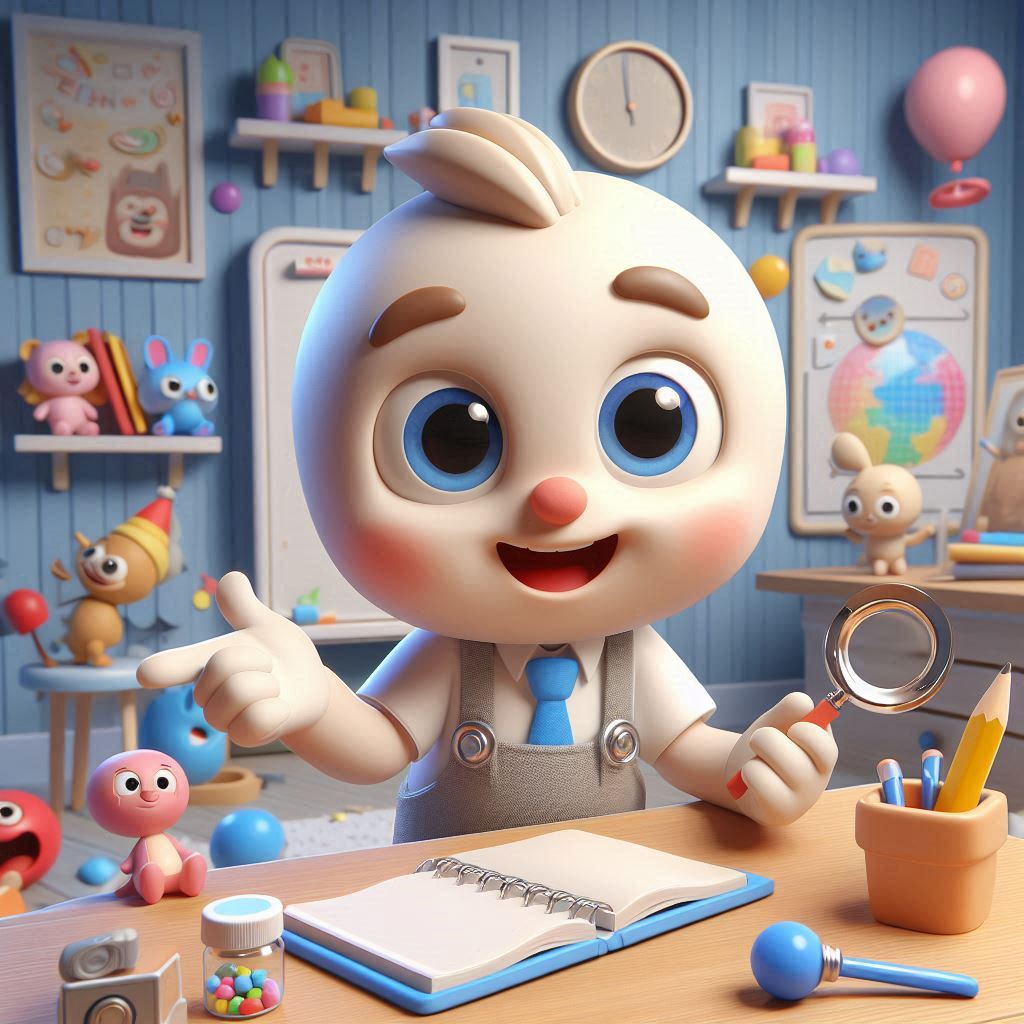
VII. Clever Joke Interpretations
Delve into witty and creative explanations of jokes, uncovering the clever wordplay and unexpected twists that make humor enjoyable for all ages.
- Why did the scarecrow win an award? Because he was outstanding in his field! (It’s a pun on being excellent and literally standing in a field.)
- What do you call fake spaghetti? An impasta! (A play on “impostor” and pasta.)
- Why don’t skeletons fight each other? They don’t have the guts. (Guts refer to bravery and internal organs, making it a pun.)
- What do you get when you cross a snowman and a vampire? Frostbite! (Combining cold snow and vampire bites for a chilly twist.)
- Why did the bicycle fall over? Because it was two-tired! (A pun on “too tired” and the bike having two tires.)
- What do you call a bear with no teeth? A gummy bear! (A joke about a toothless bear being soft and gummy.)
- Why did the tomato turn red? Because it saw the salad dressing! (Personification of a tomato blushing out of modesty.)
- What do you call cheese that isn’t yours? Nacho cheese! (A pun on “not your” and nacho cheese.)
- Why did the math book look sad? Because it had too many problems. (Math books have problems, and it’s a play on emotional distress.)
- What did one wall say to the other wall? I’ll meet you at the corner! (A literal and figurative meeting point.)
- Why did the cookie go to the hospital? Because he felt crummy! (Crummy means feeling unwell and refers to cookie crumbs.)
- What do you call a sleeping bull? A bulldozer! (A pun on “bull” and “dozer,” as in a machine that pushes things.)
- Why did the computer go to the doctor? Because it had a virus! (A computer virus, playing on health and technology.)
- What do you call a fish that wears a crown? A king fish! (A pun on “kingfisher” and royalty.)
- Why was the belt arrested? Because it held up a pair of pants! (A joke about “holding up” in both a physical and criminal sense.)
- What do you call a lazy kangaroo? A pouch potato! (A pun on “couch potato” and kangaroos’ pouches.)
- Why did the banana go to the doctor? Because it wasn’t peeling well! (A play on “feeling” and “peeling” of a banana.)
- What do you call an alligator in a vest? An investigator! (A pun on “investigator” and the alligator’s vest.)
- Why did the chicken join a band? Because it had the drumsticks! (A joke about chicken legs and musical drums.)
- What’s orange and sounds like a parrot? A carrot! (A wordplay on “parrot” and “carrot,” highlighting the similarity in sound.)
VIII. Jokes for All Ages
Enjoy a collection of fun, family-friendly jokes suitable for kids, teens, and adults alike, ensuring everyone can share a laugh together in any setting.
These jokes are perfect for all ages, bringing smiles and laughter to families, classrooms, and gatherings with humor everyone can enjoy safely and lightheartedly.
- Why did the banana go to school? Because it wanted to be a little smarter!
- What do you call a snowman with a six-pack? An abdominal snowman!
- Why did the cow go to space? To see the moooon!
- What’s a pirate’s favorite letter? You might think it’s R, but it’s the C!
- Why did the apple stop in the middle of the road? Because it ran out of juice!
- What do you call a bear that’s stuck in the rain? A drizzly bear!
- Why did the duck go to the store? To buy some quackers!
- What do you call a dinosaur that is sleeping? A dino-snore!
- Why did the orange stop rolling down the hill? Because it ran out of juice!
- What do you call a friendly spider? A web buddy!
- Why did the clock go to school? To learn how to tell time!
- What do you call a fish that plays the guitar? A rock fish!
- Why did the cookie go to school? Because it wanted to be a smart cookie!
- What do you call a flying pig? A pig in the sky!
- Why did the squirrel bring a ladder? To reach the high nuts!
- What do you call a cat that loves to bowl? An alley cat!
- Why did the bicycle go to the party? Because it was two-tired to stay home!
- What do you call a rabbit who tells jokes? A funny bunny!
- Why did the sheep go to the beach? To surf the waves!
- What do you call a cow that’s good at math? A cow-culator!
IX. Why Jokes Make Us Laugh
Understanding why Explaining Jokes evoke laughter reveals the fascinating psychological and neurological reasons behind humor.
Highlighting how our brains process surprise, recognition, and social connection.
- Jokes trigger our brain’s reward system, releasing feel-good chemicals that make us experience joy and amusement.
- The element of surprise in jokes catches our expectations off guard, leading to spontaneous laughter.
- Humor often involves recognizing clever wordplay or incongruity, engaging our cognitive abilities and sense of cleverness.
- Shared laughter from jokes strengthens social bonds by creating positive emotional experiences among people.
- Timing and delivery in jokes activate neural pathways responsible for processing rhythm and anticipation, enhancing humor appreciation.
- The brain’s pattern recognition system detects familiar joke structures, making unexpected twists more amusing.
- Humor stimulates mirror neurons, allowing us to empathize and feel connected with others’ reactions.
- Jokes that evoke laughter can reduce stress by decreasing cortisol levels and promoting relaxation.
- Understanding humor involves cognitive flexibility, as our brains interpret and reframe the joke’s punchline.
- Humor engages both the prefrontal cortex and limbic system, demonstrating its complex neural basis.
- People with a good sense of humor tend to have higher levels of creativity and mental agility.
- The rhythm and timing of joke delivery influence how effectively humor is perceived and appreciated.
- Humor often involves recognizing incongruity, which challenges our expectations and triggers amusement.
- Our capacity to understand jokes is influenced by cultural background, language, and personal experiences.
- Puns and wordplay activate multiple areas of the brain simultaneously, making them especially amusing.
- Humor can serve as a coping mechanism, helping us manage difficult emotions through laughter.
- The universality of humor suggests shared neural pathways, even across different cultures and backgrounds.
- Humor enhances social cognition by helping us interpret others’ intentions and emotional cues more effectively.
- Studies indicate that laughter from jokes can improve overall mental health and emotional resilience.
- Understanding why jokes make us laugh underscores humor’s role in fostering connection, well-being, and mental flexibility.
X. The Art of Joke Telling
Mastering the art of joke telling involves timing, delivery, and understanding your audience, making humor a delightful experience that brings smiles and shared laughter everywhere.
- Humor is most effective when delivered with confidence, making the punchline hit just right and leaving everyone smiling.
- Using expressive gestures and voice inflections can enhance the impact of a joke, making it more memorable and funny.
- Pausing briefly before the punchline builds anticipation, increasing the laughter when the joke lands perfectly.
- Knowing your audience helps tailor jokes that are appropriate and enjoyable for everyone involved.
- A good joke teller reads the room, adjusting their timing based on the crowd’s mood and energy.
- Practicing delivery ensures that the joke flows smoothly, avoiding awkward pauses or mispronunciations.
- Using playful facial expressions can add an extra layer of humor and engagement during storytelling.
- Starting with a light-hearted tone invites others to relax and prepare for some fun moments.
- Rehearsing jokes in front of a mirror or friends helps refine timing and delivery skills.
- Mixing in personal anecdotes with jokes makes storytelling more relatable and fun.
- Varying your voice pitch and speed can emphasize key parts of the joke, making it more amusing.
- Keeping the joke simple and clear ensures everyone understands and enjoys the humor.
- Knowing when to pause after a joke allows everyone to absorb the humor before moving on.
- Using playful eye contact can create a connection, making the joke more engaging and lively.
- Adding a humorous comment or smile after the punchline keeps the mood light and cheerful.
- Timing is crucial—delivering a joke too quickly or too slowly can affect its humor.
- Being genuine and relaxed helps convey confidence, making jokes more natural and funny.
- Understanding the rhythm of jokes helps in creating a seamless flow that keeps the audience entertained.
- Sharing jokes with enthusiasm and energy amplifies the humor and spreads joy among listeners.
- Practicing humor regularly builds confidence and makes joke telling an enjoyable skill to develop over time.
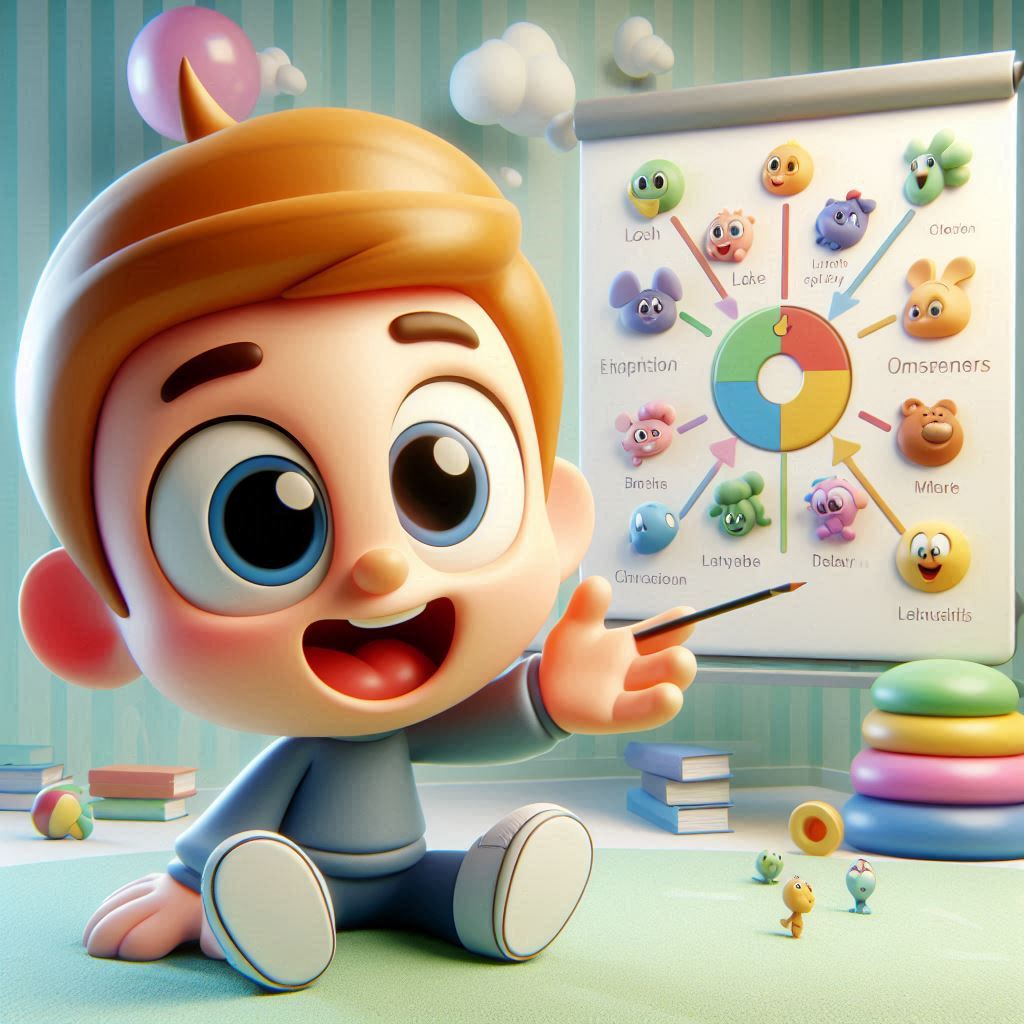
X. The Art of Joke Telling
Perfecting joke telling combines timing, expression, and audience awareness, creating moments of joy that connect people and make every gathering lively and memorable.
- Deliver jokes with confidence to ensure the punchline lands effectively and keeps everyone engaged.
- Use expressive gestures and voice inflections to enhance humor and make stories more lively.
- Pause briefly before the punchline to build anticipation and maximize laughter when delivered.
- Adjust your jokes to suit the audience’s age and mood for the best comedic effect.
- Observe the crowd’s reactions and adapt your timing to keep the mood fun and light.
- Practice your delivery to ensure smooth flow and avoid awkward moments during storytelling.
- Facial expressions can add humor, making the joke more relatable and engaging for listeners.
- Start with a cheerful tone to invite others into the fun and set a relaxed atmosphere.
- Rehearse in front of friends or a mirror to refine timing and delivery techniques.
- Incorporate personal stories or experiences to make jokes more authentic and enjoyable.
- Vary your voice pitch and pace to emphasize key parts and keep the audience interested.
- Keep jokes simple and clear, ensuring everyone understands and appreciates the humor.
- Pause after the punchline to give everyone a moment to react and laugh together.
- Maintain eye contact to create a connection and make the joke more engaging.
- Add a smile or light comment after the punchline to maintain a cheerful mood.
- Timing is essential; avoid rushing or dragging the delivery to keep humor effective.
- Stay relaxed and genuine, as naturalness enhances the humor and makes stories more fun.
- Understand the rhythm of joke delivery to create a seamless and entertaining flow.
- Share jokes with enthusiasm and energy to spread joy and keep the audience entertained.
- Consistent practice builds confidence and turns joke telling into a delightful skill everyone can enjoy.
XII. Popular Jokes and Their Impact
Enjoy a selection of well-loved jokes that have stood the test of time, shaping humor across generations and bringing smiles to countless faces everywhere.
- Why did the chicken cross the road? To get to the other side! This classic joke reminds us of simple humor that transcends age.
- Why is six afraid of seven? Because seven eight nine! A clever play on words that delights with its unexpected punchline.
- What do you call a bear with no ears? B! A humorous way to highlight how missing parts can change meaning.
- Why did the banana go to the doctor? Because it wasn’t peeling well! A light-hearted joke about fruit and health that everyone enjoys.
- How do you organize a space party? You planet! A fun pun that combines astronomy with party planning.
- What do you call a snowman with a six-pack? An abdominal snowman! A playful joke blending winter imagery with humor about fitness.
- Why did the cow go to space? To see the moooon! An amusing pun that combines farm life with outer space adventure.
- What do you call a fish that wears a crown? A king fish! A joke that brings royalty and aquatic life together in a fun way.
- Why did the cookie go to the hospital? Because he felt crummy! A sweet joke about cookies and feeling unwell that makes everyone smile.
- What do you call a dinosaur that is sleeping? A dino-snore! A silly joke mixing prehistoric creatures with sleep humor.
- Why did the orange stop rolling down the hill? Because it ran out of juice! A fruit-themed joke that’s both cute and clever.
- What do you call a friendly spider? A web buddy! A charming joke about spiders and friendship that’s family-friendly.
- Why did the clock go to school? To learn how to tell time! A simple, relatable joke about everyday objects.
- What do you call a cat that loves to bowl? An alley cat! A pun that combines feline fun with sports humor.
- Why did the squirrel bring a ladder? To reach the high nuts! A playful joke about squirrels and their acrobatic antics.
- What do you call a rabbit who tells jokes? A funny bunny! An adorable pun that’s perfect for all ages.
- Why did the sheep go to the beach? To surf the waves! A lighthearted joke about animals enjoying fun in the sun.
- What do you call a cow that’s good at math? A cow-culator! A clever pun linking animals with numbers and intelligence.
- Why did the bicycle fall over? Because it was two-tired! A classic joke about bikes and exhaustion that’s sure to get smiles.
- What’s orange and sounds like a parrot? A carrot! A playful wordplay that surprises and delights with its simplicity.
XIII. Learning from Jokes
Humor teaches us valuable lessons, encourages creativity, and enhances social skills, making jokes a fun way to grow, connect, and understand the world around us.
- Jokes often contain clever insights that help us see everyday situations from a new perspective, fostering open-mindedness.
- Sharing jokes can improve communication skills by encouraging us to think about timing and word choice.
- Humor can serve as a gentle reminder to not take life too seriously and to find joy in simple moments.
- Crafting jokes enhances creativity by challenging us to think outside the box and play with language.
- Laughing at jokes with others builds social bonds and teaches us about shared experiences and cultural nuances.
- Analyzing why jokes are funny sharpens our critical thinking and understanding of humor mechanics.
- Jokes can teach patience and timing, skills that are valuable in many social interactions and professional settings.
- Humor often highlights common human experiences, helping us feel connected and understood.
- Creating and sharing jokes fosters confidence and encourages expressive communication.
- Learning jokes suitable for different audiences develops adaptability and cultural awareness.
- Understanding the structure of jokes improves our ability to craft our own humorous stories and remarks.
- Humor can be a tool for diffusing tension and resolving conflicts through lightheartedness.
- Jokes about everyday life help us recognize and appreciate the humor in mundane routines.
- Engaging with jokes promotes mental agility by challenging us to interpret wordplay and punchlines quickly.
- Humor can boost emotional resilience by providing a positive outlook during challenging times.
- Sharing jokes teaches us the importance of timing, delivery, and audience awareness in effective communication.
- Jokes about different cultures and backgrounds foster curiosity and broaden our understanding of diversity.
- Creating jokes encourages us to think creatively and develop unique perspectives on familiar topics.
- Humor helps us learn to accept imperfections and laugh at ourselves, promoting humility and self-awareness.
- Studying jokes enhances our ability to recognize patterns and develop analytical skills applicable in many areas of life.
XIV. The Role of Timing in Jokes
Perfect timing transforms a good joke into a great one, making delivery crucial for maximizing laughter and creating memorable moments of humor.
Humor relies heavily on timing, where well-paced delivery and strategic pauses heighten anticipation and surprise, ensuring every joke lands with maximum comedic effect.
- Pausing just before the punchline builds suspense, making the reveal more impactful and funny.
- Delivering a joke too quickly can spoil the surprise, while too slow may lose the audience’s interest.
- Adjusting timing based on audience reactions ensures the humor resonates and keeps everyone engaged.
- Timing involves knowing when to pause for effect, emphasizing key words or phrases for maximum laughter.
- The rhythm of delivery helps set the tone, making the joke flow naturally and feel more genuine.
- Using a slight delay before the punchline can increase anticipation and heighten the comedic payoff.
- Practicing timing with different jokes helps develop an intuitive sense of when to deliver each part for best effect.
- Effective timing can turn an average joke into a memorable comedic moment by enhancing its delivery.
- Recognizing the right moment to tell a joke in a conversation can make it more humorous and well-received.
- Syncing your tone and pace with the joke’s structure ensures the humor hits at just the right time.
- Varying timing techniques keeps your jokes fresh and prevents predictability in delivery.
- Understanding cultural and situational cues helps in timing jokes appropriately for different audiences.
- Strategic pauses give listeners time to process the humor, increasing the likelihood of laughter.
- Timing also involves reading the room, knowing when the audience is ready for humor and when to hold back.
- Mastering timing requires patience and awareness, which can elevate simple jokes into shared moments of joy.
- Using timing creatively can add an element of surprise, making even familiar jokes feel new and funny.
- Consistency in timing helps build a style that audiences come to expect and enjoy.
- Effective joke timing can diffuse tension and create a light, cheerful atmosphere in any setting.
- Paying attention to your own rhythm and the audience’s response ensures your humor remains lively and impactful.
- Refining timing skills through practice enhances overall communication and makes storytelling more entertaining.
XV. Finding Humor in Everyday Jokes
Light-hearted humor in daily moments brings joy and connection, turning simple experiences into shared smiles for people of all ages and backgrounds.
Enjoy the fun side of everyday life with jokes that highlight the humor in common situations, making routines more cheerful and bringing people closer through laughter.
- Why did the coffee file a police report? It got mugged!
- What did the calendar say to the weekend? You’re my favorite days!
- Why did the bicycle stand still? It was tired of moving!
- How do you make a tissue dance? Put a little boogie in it!
- What did the lamp say to the switch? You turn me on!
- Why did the computer stay warm? Because it kept a byte to eat!
- What do you call a snowman with a sunny attitude? A cool dude!
- Why did the clock get in trouble? Because it was always ticked off!
- What did the pillow say to the blanket? You’re my favorite cover!
- Why did the paperclip stay at work? Because it was feeling attached!
- How do you organize a space party? You planet!
- What did the banana say to the dog? Nothing, bananas don’t talk!
- Why did the sock go to school? To get a little heel-ing!
- What did the grape say when it got stepped on? Nothing, it just let out a little wine!
- Why did the window go to school? To become more transparent!
- What did the spoon say to the fork? You’re a real cut-up!
- Why did the apple stop in the middle of the road? It ran out of juice!
- How do you catch a squirrel? Climb a tree and act like a nut!
- What did the pillow say to the bed? You’re my favorite rest!
- Why did the orange stop rolling? It ran out of peel!
FAQ: Cracking the Code of Jokes – A Fun Guide to Explaining Humor
Discover how to understand and enjoy jokes better with our cheerful and insightful FAQ, making humor accessible and fun for everyone!
What is the purpose of explaining jokes?
Explaining jokes helps clarify humor, making it easier to understand why something is funny and ensuring everyone can enjoy the punchline together.
Why do some jokes need explanation?
Some jokes involve wordplay, cultural references, or puns that may not be immediately obvious, so explaining them helps everyone catch the humor.
Can explaining jokes ruin the fun?
Sometimes, explaining a joke can take away the surprise, but it can also deepen understanding and appreciation for clever humor.
How do cultural differences affect joke explanations?
Cultural references might be unfamiliar to some, so explaining jokes helps bridge gaps and makes humor inclusive across diverse backgrounds.
Is it okay to ask someone to explain a joke?
Absolutely! Asking for an explanation shows curiosity and can lead to shared laughter and learning about different humor styles.
What are some common types of jokes that need explaining?
Wordplay, puns, and jokes based on cultural references often require explanation to fully appreciate the humor behind them.
How can I improve my joke understanding skills?
Pay attention to context, cultural cues, and word meanings, and don’t hesitate to ask questions if a joke doesn’t make sense initially.
Are there benefits to understanding jokes better?
Yes! It enhances social interactions, boosts your sense of humor, and makes shared laughter more enjoyable for everyone involved.
What’s a fun way to learn about jokes and humor?
Reading joke books, watching comedy shows, and discussing humor with friends are great ways to improve your joke comprehension skills.
Wrap Up
Explaining jokes and puns helps us understand humor better. They add cleverness and fun to everyday conversations.
Jokes often rely on wordplay, surprise, or clever twists. Understanding their context makes humor more enjoyable. Sharing jokes strengthens bonds and lightens the mood.
Remember, humor is for everyone; it’s family-friendly and lighthearted. Clear explanations can turn confusion into laughter. Keep practicing and learning about different joke styles.
Visit our site regularly for fresh jokes and humorous insights. We update new jokes every day to keep your smile bright. Bookmark us and share with friends for more fun moments! 😊
Thanks for reading! We appreciate your time and hope you enjoy our content. Keep the laughter going and spread happiness everywhere! 🎉



